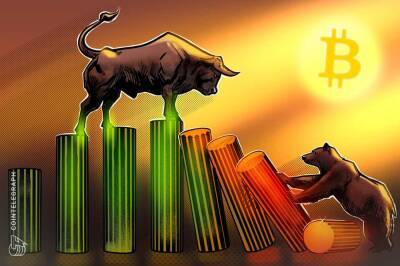Keep an eye on this if you’re holding Bitcoin, Ethereum
Bitcoin and Ethereum may feel risky to hold when considering the ongoing COVID-19 pandemic, the Russia-Ukraine War, rising inflation rates, and other global events. In fact, prices have been darting between red and green in a matter of days, if not hours, and investors are on high alert. However, data seems to suggest that there’s more nuance to it all.
Noting that crypto had entered the “big leagues” of finance, Messari acknowledged that investors might expect Bitcoin and Ether to correlate to the movements of high-risk stocks. However, that does not seem to be the case when comparing BTC and Ether to the Russell 2000 growth index.
When BTC and ETH’s correlation to Russell 2000 growth was mapped out, the correlation was above 80% between late 2020 and early 2021. But the very next year, the correlation dropped to below zero.
In 2022, however, the BTC correlation was above 20% while the ETH correlation was above 0%. The average correlation was about 35% and 30%, respectively.
<p lang=«en» dir=«ltr» xml:lang=«en»>4/ While $BTC & $ETH can be volatile, they don’t track as closely as most would assume to the riskiest market segments.Using the Russell 2000 growth index as a proxy for small-cap stocks w/ minimal earnings $BTC averages about a 35% correlation while $ETH averages about 30%. pic.twitter.com/E2vffBC4wG
— Messari (@MessariCrypto) February 27, 2022
Messari isn’t alone in concluding that Bitcoin and Ethereum have made it big at last. In fact, venture firm co-founder and author Chris Burniske claimed that BTC and ETH were the “developed markets” of crypto.
<p lang=«en» dir=«ltr» xml:lang=«en»>$BTC and $ETH are the developed markets of crypto, everything else is an emerging market.— Chris Burniske (@cburniske) February 27,
Read more on ambcrypto.com


















![Avalanche [AVAX]: Mapping out the odds of a continued uptrend - ambcrypto.com](https://finance-news.co/storage/thumbs_400/img/2022/3/29/19720_flq.jpg)

